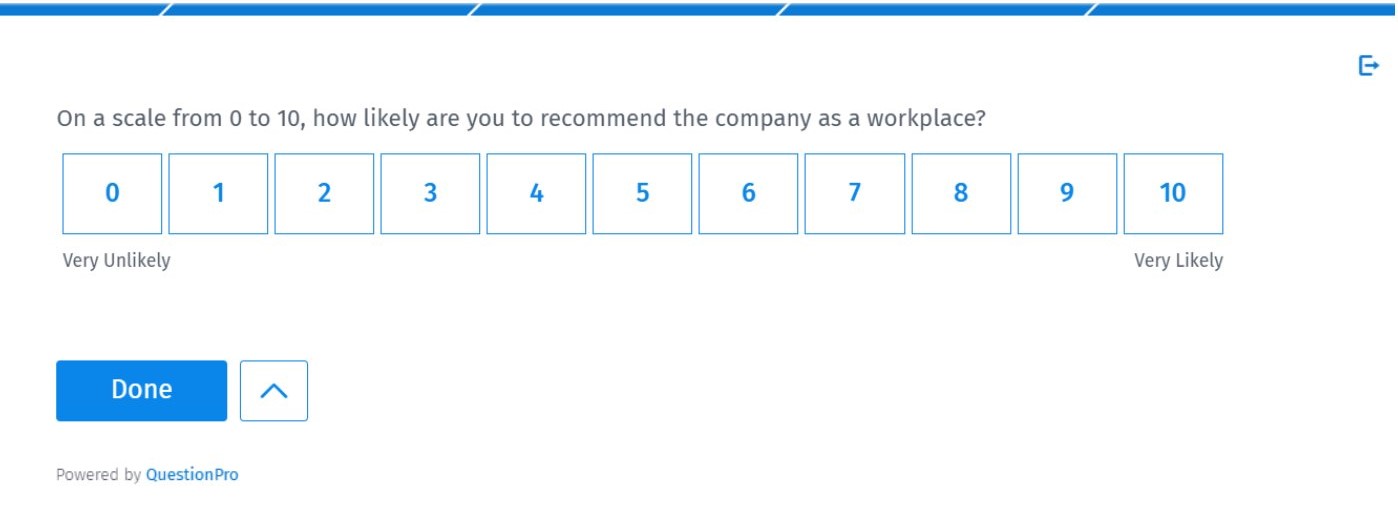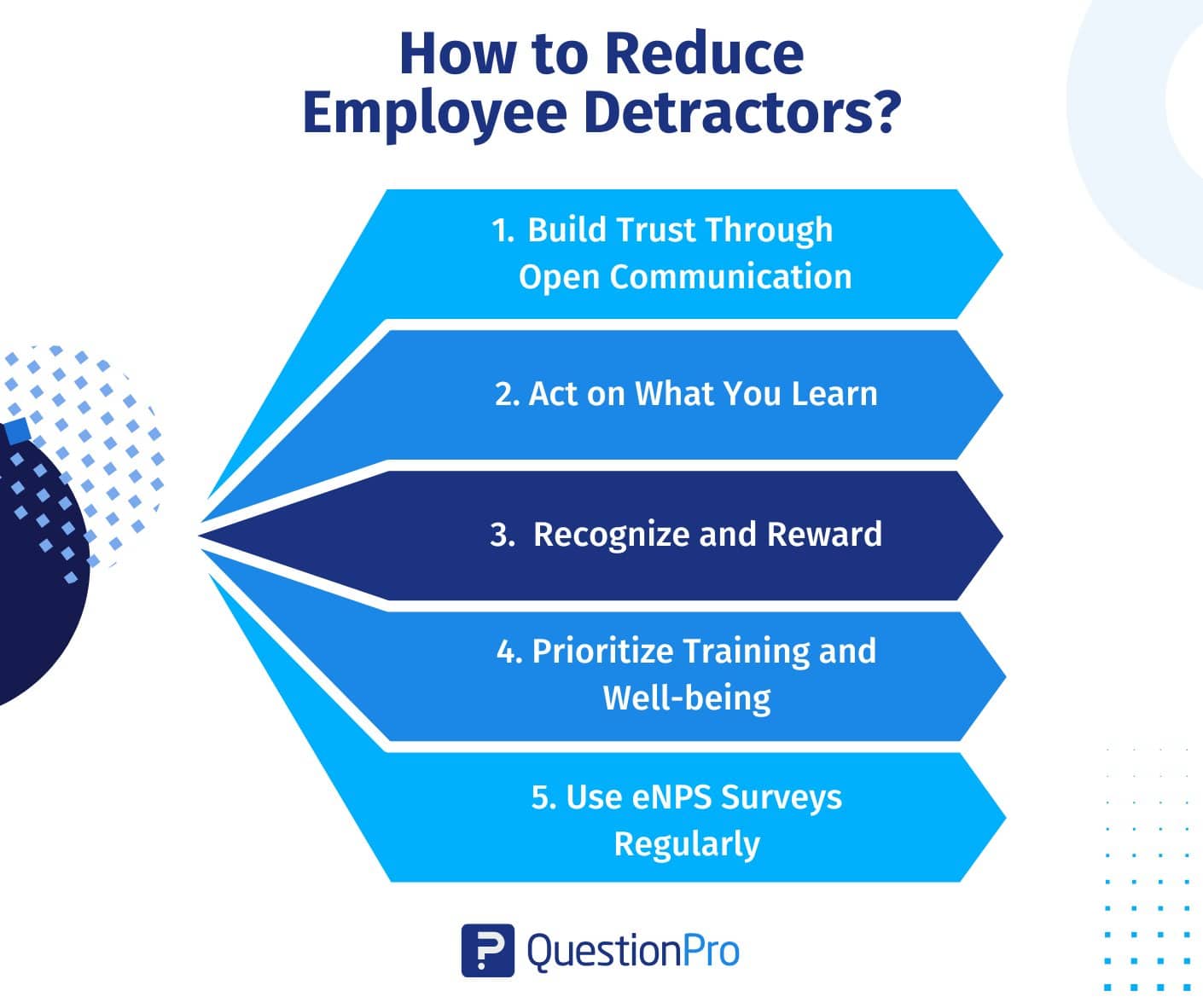
When employees feel disconnected or frustrated at work, it not only affects them but also has a ripple effect on teams, customers, and the company’s overall performance. These employees are often called employee detractors, and they usually don’t recommend the organization as a workplace to their friends and family.
In this blog, we’ll explore what employee detractors are, how to identify them early, and what practical steps you can take to support them. From eNPS surveys to better communication and recognition, we’ll cover what works when it comes to turning things around.
What are Employee Detractors?
Employee detractors are team members who feel disengaged, dissatisfied, or unhappy at work. They’re the opposite of your loyal employees or brand ambassadors, those who are excited about the company’s mission and contribute positively to the workplace culture.
You’ll often see employee detractors express negative sentiments toward leadership decisions, internal communication, or even the company’s values. While every organization has a few employees who are generally content, detractors tend to have deeper concerns that can’t be solved with surface-level solutions.
How to Identify Employee Detractors?
Recognizing detractors early is key to continuous improvement. The goal isn’t to label or alienate, but to gain valuable insights into what’s not working.
1. Use eNPS (Employee Net Promoter Score)
One of the most effective tools for identifying patterns in employee sentiment is the Employee Net Promoter Score (eNPS). These eNPS surveys ask employees a simple but powerful question:
“On a scale from 0 to 10, how likely are you to recommend our company as a place to work?”

- Promoters (9-10) are your advocates.
- Passives (7-8) are satisfied but not enthusiastic.
- Detractors (0-6) are where your focus should be.
Tracking eNPS scores over time reveals both wins and warning signs in your management practices.
2. Use Other Feedback Mechanisms
Each method adds context and helps identify patterns across teams, job roles, or departments.
- Pulse checks
- One-on-one meetings
3. Ask the Right Questions
To spot dissatisfied employees, your surveys should explore:
- How do employees feel about leadership and communication?
- Do they believe their work is recognized?
- Are they excited about their growth path?
- How supported are they in achieving work-life balance?
The more detailed feedback you collect, the more actionable insights you gain.
Employee Detractors’ Impact on Companies
The presence of employee detractors doesn’t just affect internal teams — it can impact your entire business ecosystem.
- Low Morale and Team Disruption
When employee behavior trends negatively, it doesn’t just affect that one person. Team morale, collaboration, and job satisfaction can take a hit across the board.
- Decline in Customer Experience
Employees who aren’t engaged often mirror their frustrations in customer interactions. This can lead to unhappy customers, lower customer satisfaction, and weakened customer loyalty, especially if detractors tend to hold customer-facing roles.
- Higher Turnover and Damaged Culture
Left unchecked, detractors can erode your workplace culture and influence others to share their negative views. Over time, this puts you at risk for turnover, which impacts your bottom line and the company’s success.
Common Root Causes Behind Detractor Behavior
Understanding the “why” behind a detractor is critical. Common causes include:
- Poor leadership or communication gaps
- Lack of career development opportunities
- Persistent workplace stress or burnout
- Feeling undervalued or receiving unfair compensation
- A toxic workplace culture where employees don’t feel heard
These are not isolated issues, highlighting systemic weaknesses in the employee experience.
How to Reduce Employee Detractors?
Proactive steps can minimize the damage and help turn things around for those who feel disconnected.

- Build Trust Through Open Communication
Establish transparent communication channels that enable employees to feel heard and valued. Regular check-ins, open-door policies, and platforms for detailed feedback can prevent issues from festering.
- Act on What You Learn
Don’t just collect feedback, show that you’re listening. Turn actionable insights into real solutions through strategic initiatives that target known pain points.
- Recognize and Reward
Celebrate small victories and acknowledge outstanding work. This boosts morale and encourages engaged employees to speak up more often, reinforcing a more positive work environment.
- Prioritize Training and Well-being
Invest in training, mentorship, and well-being programs. This shows commitment to your people and can boost both employee satisfaction and retention.
- Use eNPS Surveys Regularly
Regular surveys help you stay ahead of trends and respond to changes in real time. They also reinforce your commitment to continuous improvement.
How to Turn Detractors into Promoters using QuestionPro?
Turning things around starts with the right tools. QuestionPro helps you not only measure but also improve employee sentiment.
- Success Stories and Examples: Many companies using QuestionPro’s eNPS surveys have turned things around by listening deeply, identifying red flags early, and designing targeted improvements based on data.
- Frameworks for Employee Engagement: With QuestionPro, HR teams can map the full employee journey, from onboarding to exit interviews. These frameworks uncover gaps in engagement and provide actionable insights to close them.
- Long-Term Culture Change Initiatives: You can’t fix everything overnight. However, you can make steady improvements by acting on feedback, setting clear goals, and tracking your progress. The result? A positive workplace culture where people feel connected, supported, and motivated.
Conclusion
Employee detractors aren’t just a metric. They represent real people with real frustrations. Understanding their experience is a gateway to building a better workplace. With tools like eNPS, employee satisfaction surveys, and regular feedback mechanisms, organizations can identify problems early, turn negative experiences into positive changes, and empower teams to thrive.
Encourage managers to see detractors not as problems but as opportunities for growth. By listening, acting, and supporting, companies can not only reduce disengagement but transform their workforce into a network of loyal employees and brand ambassadors.
Frequently Asked Questions (FAQs)
Answer: Anything above 20% of your workforce as detractors is a cause for concern. Aim for lower rates and focus on trends.
Answer: Yes, with the right support, recognition, and engagement, many detractors can shift to becoming highly satisfied, loyal advocates.
Answer: Quarterly or biannually is ideal. Regular surveys help track progress and support continuous improvement in the employee experience.







